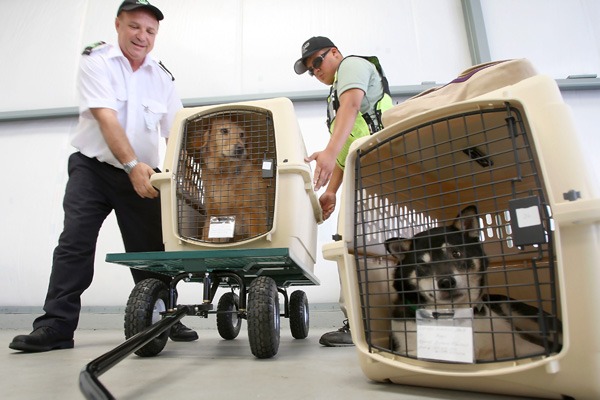 When shipping live animals such as pets or livestock, their safety, health, and well-being should be one of the primary considerations. The animal should be comfortable all throughout the transportation process to minimize the stress associated with traveling.
When shipping live animals such as pets or livestock, their safety, health, and well-being should be one of the primary considerations. The animal should be comfortable all throughout the transportation process to minimize the stress associated with traveling.
Some destinations do not allow the transportation of certain species into their territories so it is a good idea to research first if your animal is accepted in the destination you are planning to ship to. There are many animal transport companies that can make the task easier. Here are some important considerations and restrictions you must be familiarized with when shipping live animals:
Live birds can only be allowed for transport if documents proving that they were born or bred in captivity are attached to the air waybill. Wild or exotic birds can only be shipped if permits from federal agencies are provided, confirming that the transport is for breeding purposes to or from a zoo, sanctuary, preserve, or rehabilitation center.
When transporting horses, animals should always face forward or backward. transporting them transversely to the flight direction is prohibited.
Any species of primates are not allowed for shipping except when being transported between zoological organizations/societies, wildlife refuges, or rehabilitation centers. When accepted for shipping, primates must be totally weaned and be at least two years.
Animals should be within the minimum age requirement before they can be allowed for shipping. There are also restrictions on the number of animals per container. For example, dogs and cats must be more than 8 weeks old before they can be transported. A maximum of 2 dogs or 2 cats per kennel for this age is allowed. For dogs and cats 6 months or older, only one animal is allowed per kennel.
Animals should also be fully weaned, self-feeding, and healthy to travel safely.
Never transport dogs and cats in the same kennel. For safety reasons, a mother (dam) may not travel together in the same kennel with her weaned or unweaned young.
When flying with your pet, be informed that extra-large kennels may not be allowed in smaller aircraft. Aside from size, there might be a maximum weight requirement that must be met. Contact the airline or coordinate with your animal transport company to make sure the animal’s container can be accommodated on flights you are taking.
Be familiar with the acceptable temperature for your animal. Temperature guidelines are based on the actual or forecasted outdoor temperature at airports upon departure or arrival for each station on the itinerary. If outdoor temperatures are not within the acceptable limits at the time of check-in, you might coordinate with your animal shipping company and arrange for an alternate date for the animal to travel.
Only use the services of a reputable animal transport company when shipping live animals to ensure that your beloved pet will arrive in the best condition.
